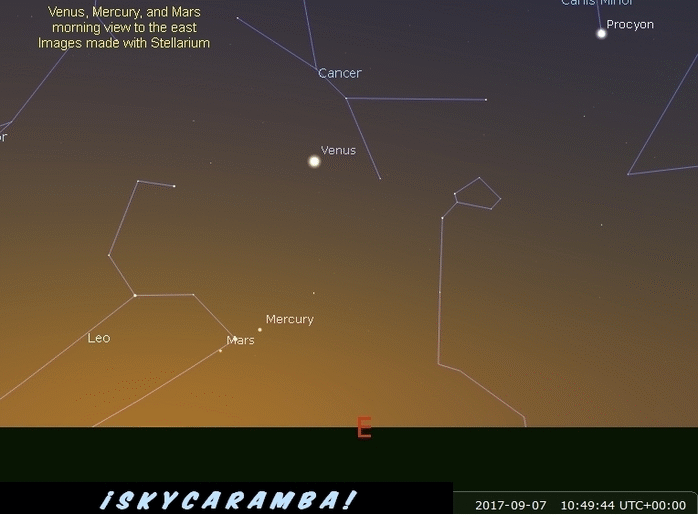As September starts, Jupiter is in Virgo in the west at Sunset and will stay close to the bright star Spica all month. Saturn is in the south in Ophiuchus. A waxing gibbous moon is a little east of there in Sagittarius. Pegasus is rising.
In the morning sky, Gemini and Orion are prominent. Venus is moving into Cancer, the heart of which is Praesepe (also known as the Beehive Cluster). Mars and Mercury are still somewhat close to the sun and hard to see. But Mercury reaches greatest elongation almost 18° from the sun on the 12th, so it gets notably easier to see morning to morning until then.

In the first few days of the month, Venus goes through and then below the Beehive. Mars and then Mercury pass below Regulus for a close call with each other on the 16th. Venus keeps getting closer to them and the waning crescent moon comes into the neighborhood on the 17th. You’ll have several interesting days of viewing these planets as the moon passes through and then leaves. The moon is below Venus and above Mars and Mercury on the 20th. On the 21st, Venus is close to Regulus and Mercury has clearly dropped below Mars.
As September ends, Mercury disappears into the daylight. Venus approaches Mars from above for a conjunction in October.
Neptune is at opposition on the 5th. However, with the moon being full the next night, the dim blue ball won’t be so easy to see. Wait a few nights so you have a few hours of moonless viewing for better luck.
The September equinox is on the 22nd.
